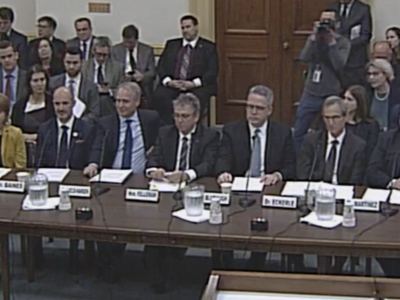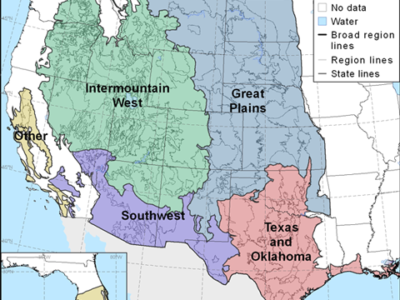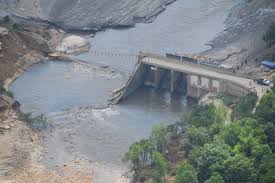Regulatory Policy
Spotlight on San Antonio
The role of transparency in municipal climate plans
Last week, San Antonio’s City Council approved its first-ever Climate Action and Adaptation Plan. This Plan’s main benefit is its ability to track and measure GHG emissions, while also signaling to City agencies, other municipalities, and the state that it is committed to climate mitigation and adaptation efforts. This is a big win for a …
Continue reading “Spotlight on San Antonio”
CONTINUE READINGHow Can We Achieve a Carbon-Neutral Transportation Sector by 2050?
Developments from a hearing before the House Subcommittee on Environment and Climate Change
Today, the Subcommittee on Environment and Climate Change of the House Committee on Energy and Commerce held a hearing entitled “Building a 100 Percent Clean Economy: Solutions For Planes, Trains and Everything Beyond Automobiles.” As the title suggests, the Subcommittee’s hearing sought to probe opportunities to decarbonize the transportation sector while focusing on modes of …
Continue reading “How Can We Achieve a Carbon-Neutral Transportation Sector by 2050?”
CONTINUE READINGThe Trump Revenge Against California Continues
DOJ Sues the State for Its Cap-and-Trade Agreement with Quebec
The Trump attack on California’s climate policies has entered a new phase. In addition to revoking the state’s permission to regulate tailpipe emissions from cars, investigating auto makers for antitrust violations for cooperating with California on reducing car emissions, threatening to revoke highway funds from the state for Clean Air Act violations while simultaneously taking …
Continue reading “The Trump Revenge Against California Continues”
CONTINUE READING“If Present Trends Continue….”
To paraphrase Socrates, “the unexplained projection is not worth giving.”
You often see forecasts like this: “If present trends continue, electric vehicles will be X% of the auto fleet by 2035.” But this doesn’t mean much without explanation: what “trends” and “continued” in what way? The Energy Information Agency is a major culprit in that respect — they provide lots of projections but don’t unpack …
Continue reading ““If Present Trends Continue….””
CONTINUE READINGEnvironmental Law Centers — Western version
It’s not just on the coasts where law schools works on sustainability.
This is part of an occasional series on the work of environmental law centers. My goal in this series is to highlight one of the ways that law schools work for the public interest, not just on the coasts but throughout the country. Here, I’ll focus on the Interior West — the plains, mountains, and …
Continue reading “Environmental Law Centers — Western version”
CONTINUE READINGLights Out, Everybody’s Home
Protecting California’s Most Vulnerable from Climate Effects
Today, rather than walking to campus, I’m home learning the features of Zoom Conference to conduct meetings and classes remotely: UC Berkeley’s campus is shut for its second day in a row, as Pacific Gas and Electric seeks to minimize risk of a wildfire (and associated liability) in the present high wind conditions. Even as …
Continue reading “Lights Out, Everybody’s Home”
CONTINUE READINGAging Dams, Forgotten Perils
You’ve heard it before but it’s still true: U.S. infrastructure is a mess.
Stop me if you’ve heard this one before: Critical U.S. infrastructure is dilapidated and unsafe. Regulation is week, and enforcement is weaker. Everyone agrees on the need for action, and climate change will only make the problem worse. but no one seems to do anything about it. Sadly, this has become a familiar story. Take …
Continue reading “Aging Dams, Forgotten Perils”
CONTINUE READINGEPA/Transportation Announcement of California Waiver Revocation is Full of Falsehoods and Irony
How Many Misstatements Can You Find?
This morning, the Environmental Protection Agency and Department of Transportation formally announced — as expected — that the Trump Administration is revoking California’s waiver to set its own vehicle standards. Yesterday, Trump tweeted the news, coupling it with falsehoods claiming that the rollback would save lives and save consumers money. As I blogged yesterday, both …
CONTINUE READINGTrump’s Tweet about Yanking California’s Waiver is, Shockingly, Full of Falsehoods
The rollback will not make drivers safer and will not save consumers money
President Trump just sent out a series of tweets announcing and defending his decision to revoke California’s permission to issue its own tough standards to reduce carbon pollution and require manufacturers to sell Zero Emission Vehicles in the state. Julia has a great analysis of why the decision is terrible policy and bad law that …
CONTINUE READINGTrump Announces Waiver Rollback on Twitter
Revoking California’s Clean Air Act Waiver Is Bad Policy and Legally Indefensible
This post was originally published on the American Constitution Society’s Expert Forum on September 18, 2019. President Trump announced the revocation on Twitter this morning. It’s not news that the Trump administration has been planning, via its so-called SAFE Rule, to freeze Obama-era fuel economy standards, roll back tailpipe greenhouse gas (GHG) emissions standards, and …
Continue reading “Trump Announces Waiver Rollback on Twitter”
CONTINUE READING









